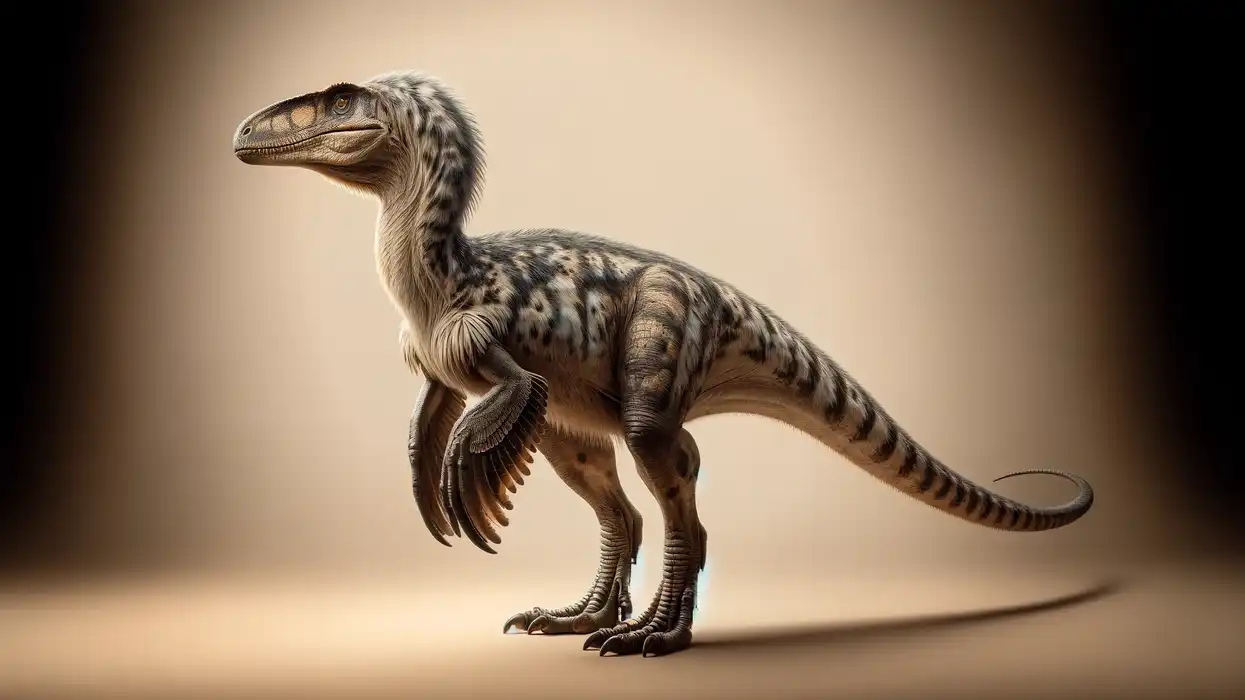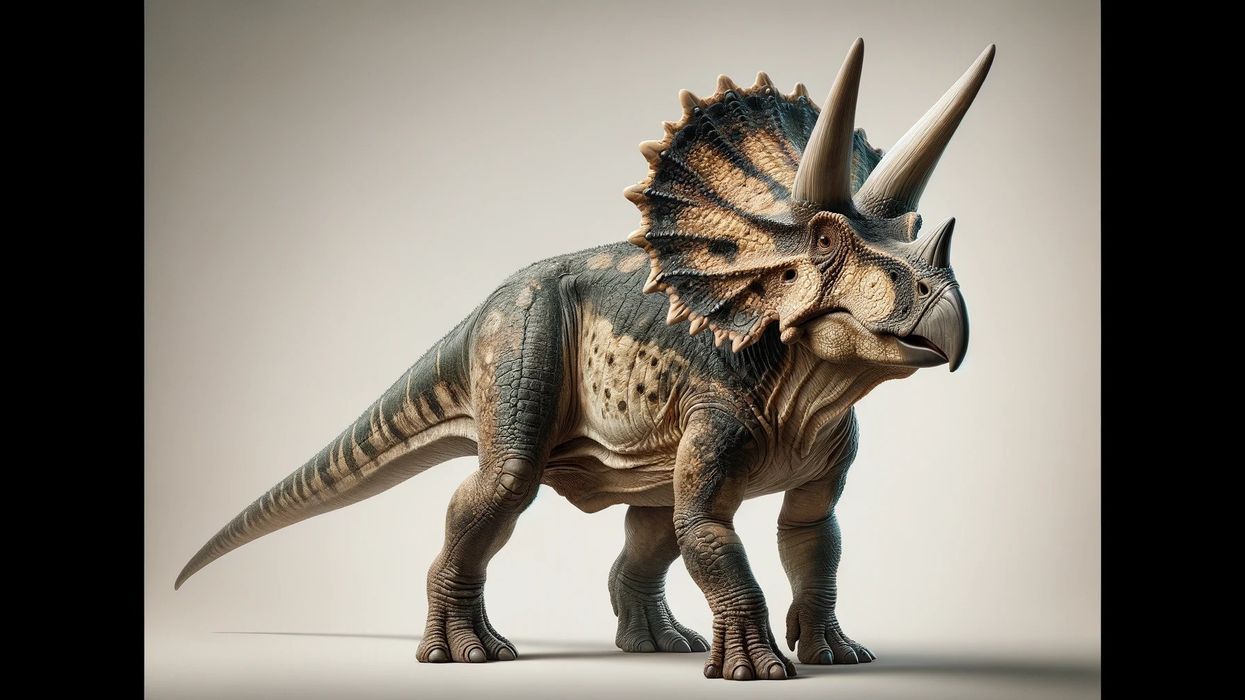Fun Arcovenator Facts For Kids

Learning about the world of dinosaurs reveals Arcovenator as an awe-inspiring and intriguing figure. These bipedal carnivores roamed the water-abundant deltas adjoining ancient rivers, making them formidable members of the Abelisauridae family.
With an innate ferocity in their hunting, Arcovenator had several physical adaptations that secured their dominance within their territory.
These dinosaurs are considered to have been skilled hunters, utilizing their sharp teeth to capture prey. Details of their diet are still unclear, but the carnivorous implications of their dental structure indicate they could have preyed on smaller dinosaurs and other animals of their era.
The biodiverse and life-filled deltas of ancient Europe served as an ideal hunting ground for the Arcovenator.
The fossils of Arcovenator, although fragmentary, provide significant insights into their existence. From these skeletal remains, paleontologists infer a creature of impressive strength and versatility, well-equipped to survive the Cretaceous Period's competitive landscape.
Continuing the assembly of fossil evidence enhances knowledge about the physical features and possible behavior of this distinguished species.
Every fossil discovery contributes a valuable piece to the puzzle, gradually unveiling the evolutionary story of the Arcovenator and expanding comprehension of these prehistoric Earth inhabitants.
Arcovenator Interesting Facts
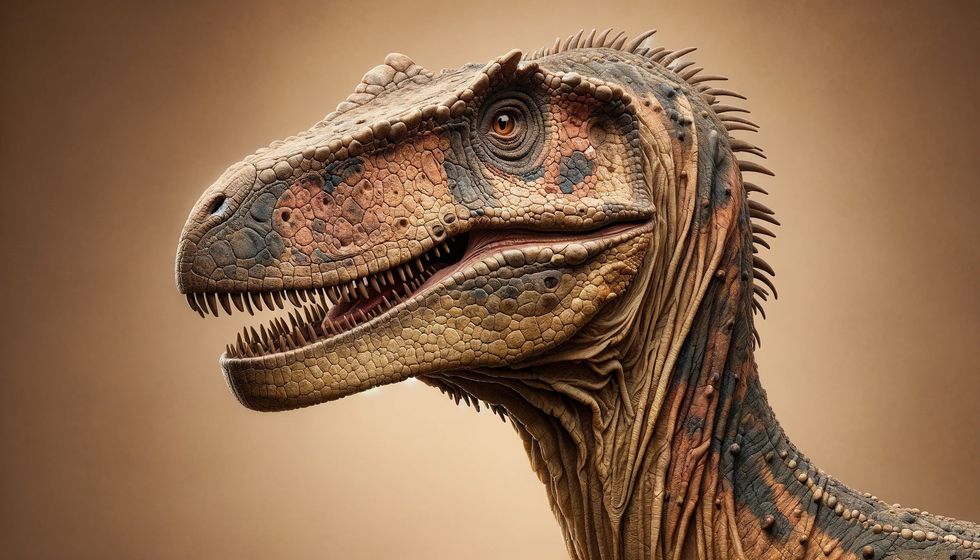
How do you pronounce 'Arcovenator'?
The name 'Arcovenator' is pronounced 'Arc-o-ven-ah-tor'.
What type of dinosaur was it?
The Arcovenator was a theropod dinosaur, specifically belonging to the Abelisauridae family.
In which geological period did this dinosaur roam the Earth?
This dinosaur roamed the Earth during the Late Cretaceous Period (72 million to 76 million years ago).
When did the Arcovenator become extinct?
The Arcovenator became extinct approximately at the end of the Cretaceous Period.
Where did this dinosaur live?
Arcovenator roamed the prehistoric landmass that constitutes present-day Europe, with its fossilized remains uncovered within the Aix-en-Provence Basin, located in the southeastern region of France.
In the era of the Late Cretaceous, this area was a segment of the expansive Ibero-Armorican island, created from the territories that are now recognized as parts of France, Spain, and Portugal.
What was their habitat?
The Arcovenator thrived in areas rich with verdant, moist landscapes typical of river deltas. Its presence in regions denoted by sedimentary layers of fluvial sandstone points to a life spent in proximity to rivers and their sprawling deltas.
Who did they live with?
Whether Arcovenators were social and lived in groups or led solitary lives is a question that has yet to be conclusively answered.
The fossils discovered within a stratum of fluvial sandstone, typical of environments near a river delta or floodplains, were found alongside remnants of other creatures such as hybodont sharks, Foxemys, Musturzabalsuchus and Ischyrochampsa, the ornithopod Rhabdodon, and the armored nodosaurids.
This diversity suggests that Arcovenators may have been part of a rich ecosystem where various species interacted, although it does not confirm their social behavior.
How long did this dinosaur live?
The lifespan of an Arcovenator remains undocumented, with concrete information not currently available. Research may shed light on this aspect of Arcovenator's biology in the future.
How did they reproduce?
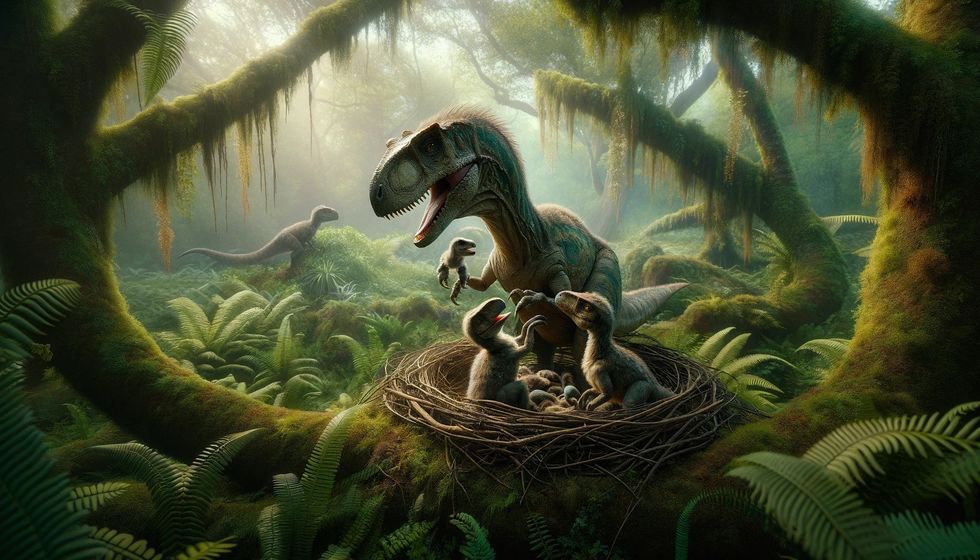
Like other dinosaurs, Arcovenator likely reproduced by laying eggs.
Arcovenator Fun Facts
What did they look like?
The Arcovenator likely had a robust build, with strong limbs and features typical of abelisaurids like short but powerful arms, and a strong jaw with sharp teeth.
How many bones did an Arcovenator have?
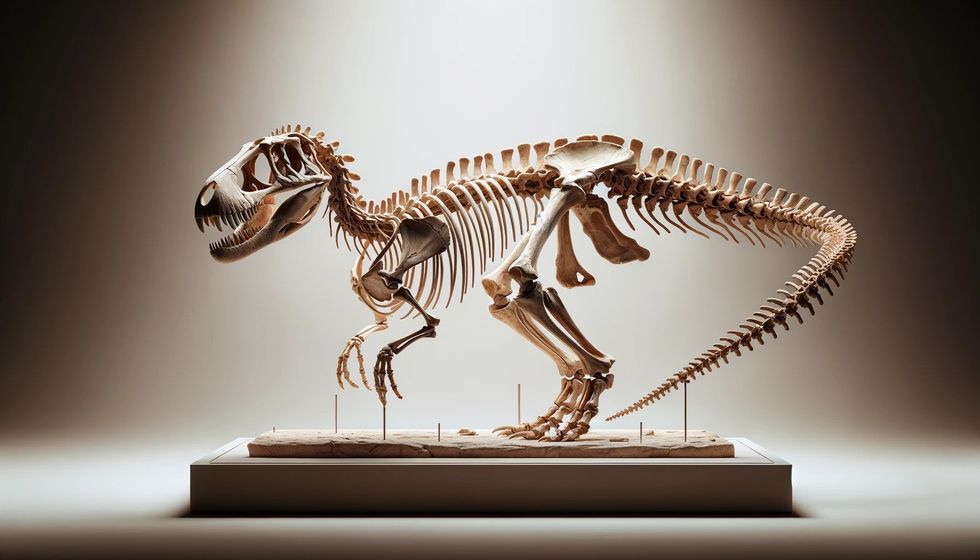
The total count of bones that comprised an Arcovenator's skeleton has not been determined, as the fossil record for this dinosaur is incomplete. Further research and discoveries may potentially provide the information needed to establish a more accurate skeletal structure of the Arcovenator.
How did they communicate?
Direct evidence detailing the communication methods of the Arcovenator is absent from the current paleontological records. As such, definitive information on their communicative behaviors remains yet to be discovered, with the possibility of future research bringing new insights.
How big was the Arcovenator?
The arcovenator was approximately 16 ft (4.8 m) long.
How fast could this dinosaur move?
The speed capabilities of the Arcovenator remain unverified, as specific data regarding their movement rates have not been established. Continued paleontological studies may provide the necessary insights to ascertain this aspect of their behavior.
How much did an Arcovenator weigh?
Current scientific data does not provide definitive information on the weight of an Arcovenator due to the incomplete nature of available fossils. It is anticipated that research may eventually offer clarity on this matter.
What were the male and female names of the species?
There are no specific terms for male and female Arcovenators.
What would you call a baby Arcovenator?
A baby Arcovenator might be referred to as a hatchling or juvenile.
How aggressive were they?
There is no available data to accurately gauge the aggression levels of Arcovenator. Research and future discoveries may provide insight into their behavioral patterns.
Did You Know?
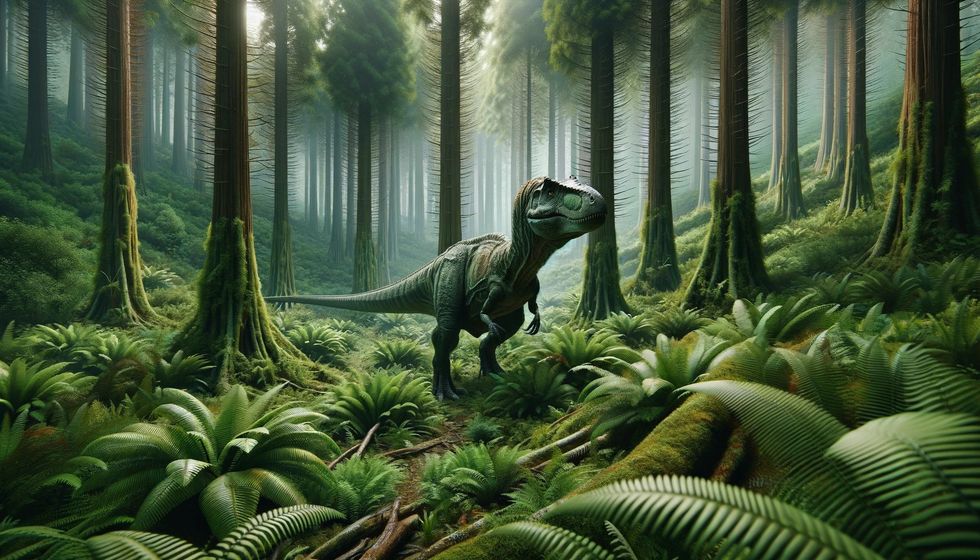
This theropod is known from partial skull remains found in Southern France, providing insightful glimpses into its characteristics and classification among theropods.
The discovery of Arcovenator escotae's fossils occurred in the vicinity of Pourrières, positioned within the Var department of the Provence-Alpes-Côte d'Azur region.
This significant find was made during pre-construction evaluations for paleontological and archaeological significance along the A8 motorway section stretching from Châteauneuf-le-Rouge to Saint-Maximin.
The name of the genus Arcovenator pays homage to its geographical roots, originating from the vicinity of the Arc river basin, coupled with the Latin term 'venator', meaning hunter.
The species descriptor 'escotae' is a gesture of gratitude towards the motorway concession firm, Escota, whose financial support since 2006 has been vital in excavating and exploring this site.
This creature once thrived on what is referred to as the Ibero-Armorican island, an expansive prehistoric landmass that corresponds to present-day regions of France, Spain, and Portugal.
Nestled within the Aix-en-Provence basin, known for its gentle and contained topography, this area stood at roughly 35°N in paleolatitude.
It was flanked by limestone highlands, with the Sainte Victoire and Etoile massifs to the north and south, and the Maure Mountains to the east. Sediments from these elevations would journey along rivers toward a sizable lake, depositing layers of lacustrine, alluvial, and fluvial sediments.
This was the environment that this intriguing dinosaur called home, a warm, somewhat moist climate with distinct seasons.
The tail vertebrae of this captivating species display remarkable similarities to those found in Majungasaurus, albeit with a greater degree of compression from the top down.
The vertebral bodies feature dual-concave joint surfaces and are structurally intermediary, with facets not quite as round as those in Ilokelesia, yet less elliptical than those seen in Rajasaurus, lacking both air-filled cavities and the additional spine-to-spine links known as hyposphene-hypantrum articulations.
The horizontally extended portions of their neural arches, known as transverse processes, are less outwardly angled compared to their counterparts in the Brachyrostra subgroup.
The primary specimen representing this unique dinosaur, which is showcased at the Museum Of Natural History in Aix-en-Provence, was extracted from a singular layer of riverine sandstone.
This specimen comprises a well-connected skull, including parts such as a braincase attached to the right bone above the eye socket, a left cheekbone, a solitary tooth, the front segment of a tail vertebra, along the right shinbone, and a calf bone.
Additionally, other fossils found in proximity, both spatially and stratigraphically, namely two segments from the anterior part of the tail and three teeth, have been attributed to the same species, though they hail from different individual dinosaurs.
The tail vertebrae of this extraordinary creature bear a strong resemblance to those found in Majungasaurus but are more compressed from top to bottom.
Their vertebral bodies feature amphicoelous, or hourglass-shaped, connections, exhibiting characteristics that sit between the round articulations seen in Ilokelesia and the more elliptically formed ones in Rajasaurus.
It lacked any signs of air-filled cavities or additional stabilizing articulations known as hyposphene-hypantrum.
The extended projections from the vertebrae known as the transverse processes in the neural arch are less angled compared to what is observed in members of the Brachyrostra subgroup.
A phylogenetic analysis led by Thierry Tortosa and his team, which incorporates findings from both newly discovered fossils and previously unnamed French abelisaurs, provided insights that contribute to the understanding of this dinosaur's lineage.
The research draws upon earlier published materials and outlines the interrelations within the Abelisauridae as depicted in their proposed cladogram.
Further understanding of the abelisauroids' ancient geographical distribution has emerged, challenging theories that only take into account the landmasses formed from the Mesozoic-era fragmentation of Gondwana.
FAQs
What is the distinctive characteristic found in the skull roof of this dinosaur?
The skull roof of this species features a distinctive identifying characteristic, a midline opening, which may have accommodated the pineal gland, located at the back of a subtle dome shaped by the frontal bones.
These bones exhibit a moderate thickness, comparable to that seen in Aucasaurus, yet not as thick as in Rajasaurus, but thicker than in Rugops.
What are the notable features of its shinbone (tibia) and fibula?
The shinbone (tibia) of this dinosaur, measuring a slim 51 cm (510 mm) in length, features a prominent cnemial crest, a trait common among abelisauroids.
It is noted for its outer upper condyle being more pronounced than the inner one, a subtle forward and upward bend at the top edge of the fibula ridge, a distinct lengthwise ridge near the distal end, and narrowing ankle bones.
The fibula, which is nearly half a meter in length, exhibits characteristic features associated with the ceratosaur group of dinosaurs.
Which theropod family and clade does it belong to?
It belongs to the theropod family, specifically categorized within the Abelisauridae clade under Linnaean systematics. This classification places it closely alongside noasaurids, all of which fall under the larger group of Abelisauroidea.
Furthermore, along with dinosaurs like Limusaurus and Ceratosaurus, it is a part of the Ceratosauria branch. Typical traits that define abelisaurids include their uniquely short yet tall head structure adorned with complex surface textures, comparatively tiny forearms, and robust, well-built back limbs.
What branches of European abelisaurs have been identified within the European Archipelago?
Within what's termed the European Archipelago, two distinct branches of European abelisaurs have been identified: an early, basal group seen in the smaller Albian age Genusaurus and Lower Campanian Tarascosaurus, and a later, more advanced group.
This latter category includes the larger Campanian Period Arcovenator, closely related to both the Madagascan Majungasaurus and the Indian Rajasaurus, under the Majungasaurinae subfamily.
How does phylogenetic analysis relate European abelisaur lineages to other abelisaurids?
The patterns of traits discerned through phylogenetic analysis suggest that these European lineages are not more closely related to each other than they are to other abelisaurids, indicating a more intricate historical tapestry of their movement and distribution.
This points to the possibility of an older lineage having spread by land-based separation, and a more recent lineage likely dispersed across oceans.
These findings support the hypothesis that Africa served as a central stepping stone facilitating the interchange of species between Europe and the regions of India or Madagascar, while also highlighting the isolation of South American abelisaurids.
Dinosaurs such as these hold a profound allure due to their deep-rooted lineage, offering a glimpse into the Earth's vibrant and ever-changing past.
The details surrounding this dinosaur may be wrapped in an enigma, yet with every bone fragment that is excavated, a clearer picture begins to form of these exceptional creatures.
We Want Your Photos!
More for You
Sources
Bachelor of Arts specializing in Linguistics

Martha MartinsBachelor of Arts specializing in Linguistics
Martha is a full-time creative writer, content strategist, and aspiring screenwriter who communicates complex thoughts and ideas effectively. She has completed her Bachelor's in Linguistics from Nasarawa State University. As an enthusiast of public relations and communication, Martha is well-prepared to substantially impact your organization as your next content writer and strategist. Her dedication to her craft and commitment to delivering high-quality work enables her to create compelling content that resonates with audiences.
Bachelor of Science specializing in Human Anatomy

Joan AgieBachelor of Science specializing in Human Anatomy
With 3+ years of research and content writing experience across several niches, especially on education, technology, and business topics. Joan holds a Bachelor’s degree in Human Anatomy from the Federal University of Technology, Akure, Nigeria, and has worked as a researcher and writer for organizations across Nigeria, the US, the UK, and Germany. Joan enjoys meditation, watching movies, and learning new languages in her free time.
Disclaimer
1) Kidadl is independent and to make our service free to you the reader we are supported by advertising. We hope you love our recommendations for products and services! What we suggest is selected independently by the Kidadl team. If you purchase using the Buy Now button we may earn a small commission. This does not influence our choices. Prices are correct and items are available at the time the article was published but we cannot guarantee that on the time of reading. Please note that Kidadl is a participant in the Amazon Services LLC Associates Program, an affiliate advertising program designed to provide a means for sites to earn advertising fees by advertising and linking to Amazon. We also link to other websites, but are not responsible for their content.
2) At Kidadl, we strive to recommend the very best activities and events. We will always aim to give you accurate information at the date of publication - however, information does change, so it’s important you do your own research, double-check and make the decision that is right for your family. We recognise that not all activities and ideas are appropriate for all children and families or in all circumstances. Our recommended activities are based on age but these are a guide. We recommend that these ideas are used as inspiration, that ideas are undertaken with appropriate adult supervision, and that each adult uses their own discretion and knowledge of their children to consider the safety and suitability. Kidadl cannot accept liability for the execution of these ideas, and parental supervision is advised at all times, as safety is paramount. Anyone using the information provided by Kidadl does so at their own risk and we can not accept liability if things go wrong.
3) Because we are an educational resource, we have quotes and facts about a range of historical and modern figures. We do not endorse the actions of or rhetoric of all the people included in these collections, but we think they are important for growing minds to learn about under the guidance of parents or guardians.





